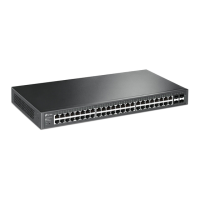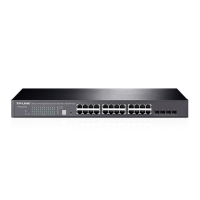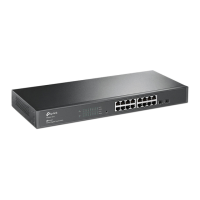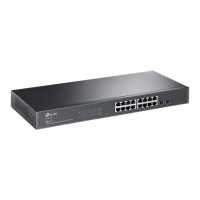Configuration Guide 762
Configuring SNMP & RMON Notification Configurations
3.2 Using the CLI
3.2.1 Configuring the NMS Host
Configure parameters of the NMS host and packet handling mechanism.
Step 1 configure
Enter global configuration mode.
Step 2 snmp-server host
ip udp-port user-name
[smode { v1 | v2c | v3 }] [slev {noAuthNoPriv |
authNoPriv | authPriv }] [type { trap | inform}] [retries
retries
] [timeout
timeout
]
Configure parameters of the NMS host and packet handling mechanism.
ip:
Specify the IP address of the NMS host in IPv4 or IPv6. Please make sure the IP
addresses of the NMS host and the switch are able to reach to each other.
udp-port:
Specify a UDP port on the NMS host to receive notifications. The default is port
162. For communication security, we recommend that you change the port number under
the condition that communications on other UDP ports are not affected.
user-name:
Enter the name used by the NMS host. When the NMS host uses SNMPv1 or
SNMPv2c, enter the Community Name; when the NMS host uses SNMPv3, enter the User
Name of the SNMP Group.
v1 | v2c | v3: Choose the security mode used by the user from the following: SNMPv1,
SNMPv2c, SNMPv3. The NMS host should use the corresponding SNMP version.
noAuthNoPriv | authNoPriv | authPriv: For SNMPv3 groups, choose a security level from
noAuthNoPriv (no authorization and no encryption), authNoPriv (authorization and no
encryption), authPriv (authorization and encryption). The defaut is noAuthNoPriv. Please
note that if you have chosen v1 or v2c as the security mode, security level cannot be
configured.
trap | inform: Choose a notification type for the NMS host. For SNMPv1, the supported type
is trap. For SNMPv2c and SNMPv3, you can configure the type as trap or inform.
When the NMS host receives a trap message, it will not send a response to the switch. Thus
the switch cannot tell whether a message is received or not, and the messages that are
not received will not be resent. When the NMS host receives an Inform message, it sends
a response to the switch. If the switch does not receive a response within the Timeout
interval, it will resend the Inform message. Therefore, Informs are more reliable than Traps.
retries:
Set the retry times for Inform messages. The range is 1 to 255 and the default is 3.
The switch will resend the Inform message if it does not receive response from the NMS
host within the timeout interval. And it will stop sending Inform message when the retry
times reaches the limit.
timeout:
Set the length of time that the switch waits for a response. The range is 1 to 3600
seconds; the default is 100 seconds. The switch will resend the Inform message if it does
not receive a response from the NMS host within the timeout interval.
Step 3 show snmp-server host
Displays the information of the host.

